iPad mini Review
by Anand Lal Shimpi & Vivek Gowri on November 20, 2012 6:10 PM ESTDesign & Smart Cover
The smaller screen of the mini is joined by the super-slim industrial design from the fifth generation iPod touch that debuted a couple of months ago. I’m actually a pretty big fan of the direction Apple’s mobile design teams have taken recently, the overall visual style is much cleaner and focused now, with less pronounced radiusing and more rectangular profiles across the board. The edges are rounded enough for a very smooth in-hand feel, but the front edge has the same highly polished, chamfered ring around the bezel as the iPhone 5.
The dark monochromatic look is very sleek; combined with a brightly colored Smart Cover like the red one, the effect is pretty striking. The white/silver colour scheme, as on the iPhone 5, is elegant, but nowhere near as visually striking as the uniformly dark mini.
The face should be very familiar to iDevice users - a front facing camera centered at the top, an ambient light sensor to the left of it, and a home button at the bottom. The home button has been shrunk, though it’s set far enough away from the screen that I feel like they could have easily kept the same home button that is used in the other iDevices. I’m assuming there’s a reason for the downsizing, probably relating to the placement of the hardware around the display, because this isn’t the type of thing typically overlooked by Jony Ive and Co.
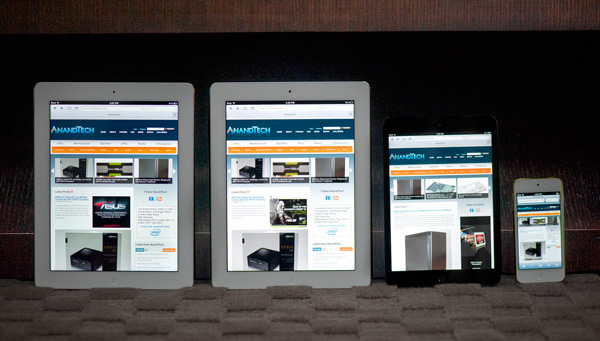
From left to right: iPad 4, iPad 2, iPad mini, iPod Touch (5th gen)
The bezel has been reduced considerably in size in all four directions, but more so on the sides than to the top and bottom. The result is a device with a slightly different physical aspect ratio than the 9.7” iPad - 4.45:3 instead of 3.90:3 (where, in both cases, the display has an aspect ratio of 4:3). The narrower bezel looks good - cleaner and more modern, and I think the iPad mini is better proportioned aesthetically. Of course, the smaller footprint is also one of the main factors in the awesome in-hand feel, so it’s a functional decision as much as an aesthetic one. Surprisingly enough, the lack of bezel on the sides of the mini doesn't impact normal use. Apple tweaked iOS a bit to improve touch rejection along the edges of the mini.
Button and port placement is identical to the preceding iPads, with a few minor but important changes. The silence/rotation lock slider in particular feels much more robust than in previous editions. The top edge has the power button on the right and headphone jack on the left, with volume buttons on the right edge, next to the camera. The buttons themselves are now metal, and offer better feel and feedback than the plastic buttons of the 9.7” iPad.
Coming around the edge to the bottom, we see that the 30-pin dock connector has been replaced by the new Lightning port, centered as always. The mono speaker in the right corner of the back is now gone, superceded by a pair of speakers set on either side of the Lightning port. That’s right - the iPad finally has stereo speakers, and they’re actually pretty decent. Clean sound output, and loud enough to fill a 400 sq ft room without distorting at high volumes. As with most mobile devices, the sound is a bit thin, but a decent improvement over my admittedly low expectations.
Given that the iPad mini shares the same colors and materials as the iPhone 5, I was curious to see whether the paint would be as fragile and whether we’d see a repeat of the quality control issues Apple had with it at launch. Thankfully, the anodization seems far more robust and significantly more resistant to scratching, even on the polished aluminum band at the front. I didn’t see any material or paint defects when I unboxed it, even after a thorough going over, and through two weeks of not particularly gentle use, I haven’t seen any scratching. It’s a very different experience than my iPhone 5, which came out of the box with the front panel not properly clipped into the aluminum frame and scratched whenever I looked at it wrong. This isn’t a device that needs any other kind of case unless you plan on abusing it, and I feel like a larger case would undo some of the benefit of the ultralight chassis.
Apple does built a custom Smart Cover for the mini, available in a number of colors. Unlike the bigger Smart Cover, the mini's cover integrates the magnetic hinge into the same material as the rest of the cover, resulting in a very cohesive design:
The big benefit of the Smart Cover is the ability to use it as a stand:
The angle of the folded Smart Cover is considerably larger than on the standard iPad, making the iPad mini lean back more vs. standing upright on the bigger model:
I would recommend getting a Smart Cover for the versatility of the stand and to have some form of protection for the screen. Plus, the black iPad mini + red Smart Cover combination just looks awesome.


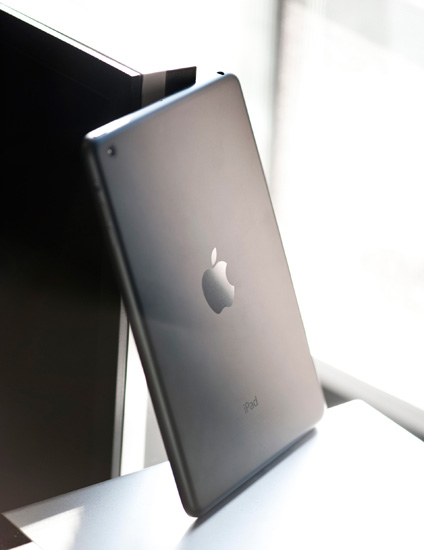
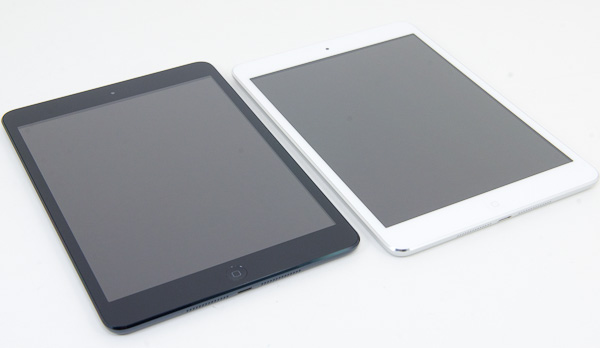
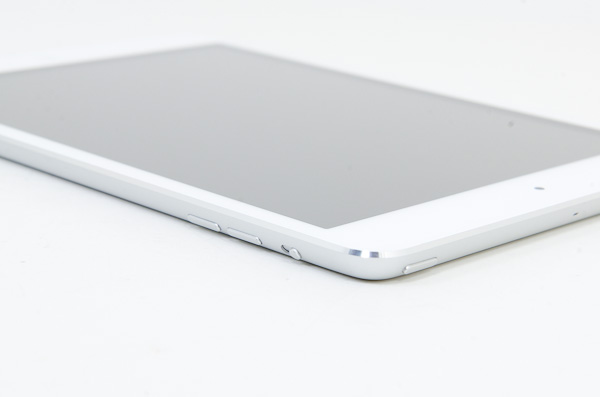
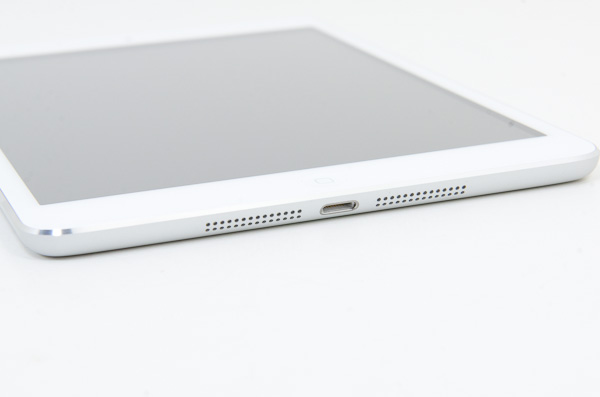
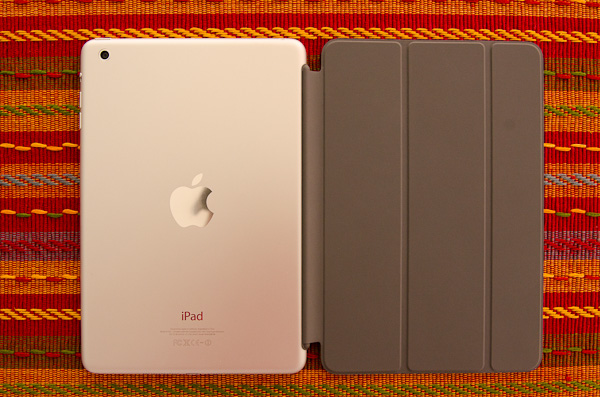
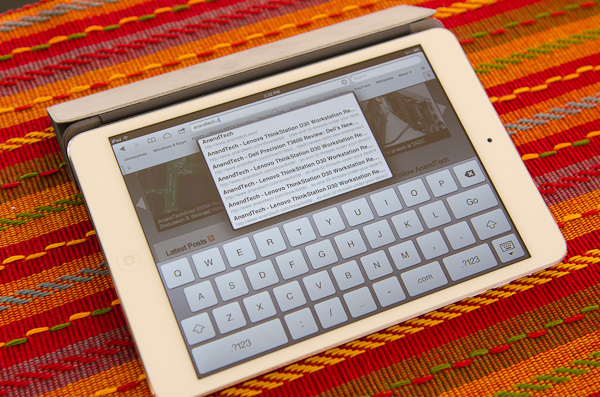
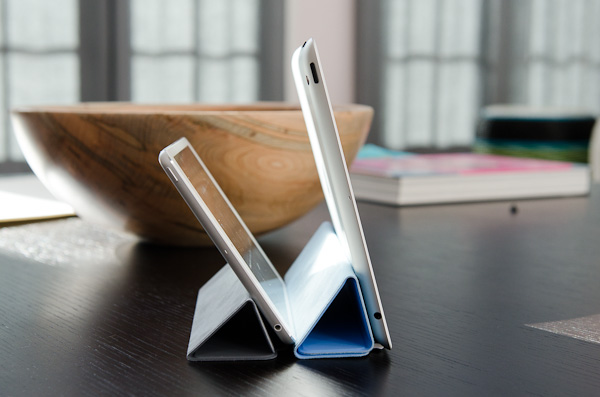








140 Comments
View All Comments
EnzoFX - Tuesday, November 20, 2012 - link
Just give the 7" the 2048 res treatment, and then double the 10" iPad's resolution once again! lol.Seriously though, it involves support on their end for some software changes, hope they follow through. I doubt they would want this mini to always (even the near future) have this resolution.
Zink - Wednesday, November 21, 2012 - link
LCDs in phones are at 440 ppi with some manufacturers testing almost 500 ppi so with a big investment from Apple, doubling the Retina (264 ppi) iPad's resolution would probably be possible within 1 or 2 years. It wont happen though because of reduced battery life and reduced performance on current hardware for a very subtle gain in image quality. It will probably be 5 years before we see 10 MP+ tablets because battery life and light weight are more important. Mobile SOCs also just aren't fast enough. Even with DDR3 next year the iPad will still only have twice the memory bandwidth it had for the iPad 3, not enough to even attempt 4x the pixels. Getting enough memory bandwidth for double Retina in an iPad will require next generation DDR technology or an even wider memory system which won't be viable anytime soon.jecastejon - Wednesday, November 21, 2012 - link
I just hope the "resolution war" on tablets and phones to be over at 400 dpi, but it should be already over at 350 dpi.From the human sight point of view it is basically over. The extra power and resources should go to better frame rates, better graphics and battery life.
Today there are a few ridiculous measurements or also detrimental technology examples going higher every day like the dynamic contrast on TVs or the megapixel war on tiny consumer sensor cameras. They are misleading advertisement.
500 dpi is useless to 99.9% of humans at almost all ages even if the technology allows to go further and further.
Dribble - Tuesday, November 20, 2012 - link
It's going to age very fast with that ancient cpu, and only 512mb of memory. Basically the moment the mini 2 comes out with a faster cpu this one will be forgotten and apps won't run on it.tbh seems like a rip off to me. It says something that the main reason I read for buying it is the shape of the screen - you've got to love that a lot to buy something that is all the other ways worse then it's much cheaper competition.
marcolorenzo - Tuesday, November 20, 2012 - link
Did you look at the benchmarks? I'm not sure I would say that it is "all the other ways worse then it's much cheaper competition."As a HTC One X user, I can tell you first hand the Tegra 3 isn't the sum of its parts, and the benchmarks that Anand provides proves that.
ltcommanderdata - Tuesday, November 20, 2012 - link
You actually anticipate developers will drop support for the iPad Mini "the moment" the 2nd generation is released? The 1GHz A5/A5X CPU is also used in the iPad 2 and iPad 3, while the slower 800Mhz A5 is used in the iPhone 4S and 5th gen iPod Touch which will both be on sale into 2014 given Apple's 3 year iPhone and 2 year iPod Touch sale cycles as they move down price tiers. The majority of iOS devices are A5 devices and will be for the next year or 2. The vast majority of apps still support 3rd generation devices and 4th generation device support is even higher. Apple's license agreement guarantees the iPad Mini will get iOS 7 and historically each device runs 3 major OS revisions over it's lifespan, so the iPad Mini will likely get OS updates into 2015. The chances of developers dropping support for 5th generation devices like the iPad Mini in the next year or 2 seem slim.Dribble - Wednesday, November 21, 2012 - link
You can think that if you like but 512mb of ram is already a limiting factor, and the cpu/gpu will start to be come one too as time goes by.This is the world of apple - if it's not new then it doesn't matter, and with the mini you are essentially buying something that's already 1 1/2 years old.
drx11 - Sunday, November 25, 2012 - link
Except its 512MB (megabytes, no mb or megabits) of RAM.... but I know what you are saying. I suppose you should have some concern, but then again Apple - at least for the last few years - has been the best at SoC and even my old arsed iPhone 3GS runs well with iOS 5. It could run iOS 6, though it wont have the best features ... so that should change your mind.Unlike Google/OEMs/phone carriers, Apple supports its hardware and you get more out of the hardware - even when the specs are not "as good" as the competition.
DeciusStrabo - Thursday, November 22, 2012 - link
CPU is still ok, GPU the same, but the 512 MB RAM is absolutely something that's a worry. It wasn't enough on my iPad 2 a year ago and it's very annoying in Safari if you have several tabs. And it will only get worse as time moves on. Adding another 512 MB RAM would have cost Apple basically nothing and made the product a lot more future proof (as far as it is possible in this fast-moving segment of a fast-moving industry).karasaj - Tuesday, November 20, 2012 - link
Will it blend?